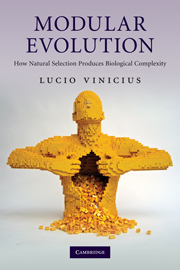Book contents
- Frontmatter
- Contents
- Preface
- 1 From natural selection to the history of nature
- 2 From the units of inheritance to the origin of species
- 3 Multicellularity and the developmental code
- 4 Life cycle evolution: life and death of the soma
- 5 Sex and its consequences: the transition that never happened
- 6 Animal societies: the case of incomplete evolutionary transitions
- 7 The new ‘Chain of Being’: hierarchical evolution and biological complexity
- References
- Index
- References
References
Published online by Cambridge University Press: 05 June 2012
- Frontmatter
- Contents
- Preface
- 1 From natural selection to the history of nature
- 2 From the units of inheritance to the origin of species
- 3 Multicellularity and the developmental code
- 4 Life cycle evolution: life and death of the soma
- 5 Sex and its consequences: the transition that never happened
- 6 Animal societies: the case of incomplete evolutionary transitions
- 7 The new ‘Chain of Being’: hierarchical evolution and biological complexity
- References
- Index
- References
- Type
- Chapter
- Information
- Modular EvolutionHow Natural Selection Produces Biological Complexity, pp. 208 - 232Publisher: Cambridge University PressPrint publication year: 2010



